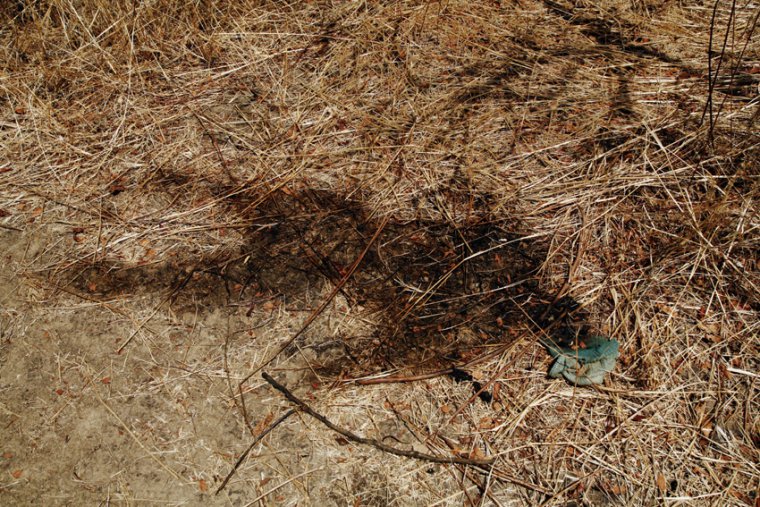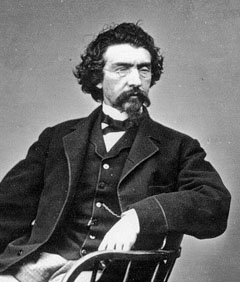Robert Capa changed so many aspects of war photography. He was the first to go with the soldiers to combat and photograph there. This not only changed the lives of photojournalists but also changed the perspectives of many people. Before this, individuals may not have understood the extent of war.
He was born in Hungary, but was a naturalized U.S. citizen. The collage that I did shows a series of photos that Capa posted on Magnum Photos. I put these together because I think that Capa really showed some of his best work on Magnum.
Career Path:
Robert Capa was most famous for his war photography and helping to create Magnum Photos. He created Magnum photos because him and a couple other photojournalists wanted to "reflect their independent natures as both people and photographers." This was something they created beyond the companies they worked for. They really wanted to show the photos that they could choose to be published instead of only showing certain photos from war. They were very flexible in choosing where their next project would be so all of them were covering a wide variety of issues. Capa took photos during World War II and was one of the first photojournalist to be in combat with the troops. He was killed in 1954 when he stepped on a land mine covering the French Indochina War. He died with a camera in his hand.
Era:
During the time that Capa was taking photos, it was a male dominant field. Many of his famous photos came from the Spanish Civil War, and World War II. Him and his colleagues created Magnum Photos 1947. There were many conflicts going on around the world at the time that Capa was photographing.
Motivation:
When he was only 18 years old, he was arrested in Hungary for political activities. His father banished him from his home after that event, so Capa was on his own. He showed so much emotion in his photos and really brought out the terror of war. Humans motivated him. That is what he took the most interest in. Capa was Jewish, so the second World War was something that hit close to home.
Technology:
During the time that Capa took photos, they were not so mobile. He took photos with two
Contax II cameras mounted with 50mm lens. These cameras were not like the ones we have today. This technology made it a lot more dangerous when being in war and carrying around that heavy equipment.
Ethics:
Capa did not like war. He photographer war to let the world see what events were taking place. He really exposed the realism of war. He never took photos that were staged or that did not represent the war for how it was. He always kept his photos real and made sure to take them for the right reasons. He took photos of war for the public, not to just take famous photos. That is the reason he created Magnum Photos.
Photographic Style:
In the Encyclopedia of World Biography, Capa is described as always putting a face on war. He photographed people in war and every aspect of them. He had "a deeply moving account of the boredom, terror, and insanity of war, are characterized by a direct appeal to the emotions, the response of average people to events beyond their control."
 |
| The photo of Pablo Picasso that Capa took in 1944 has a great use of shadows. The photo is very clear, but it has a lot of shadows. The shadows give the photo a really interesting perspective and makes the photo seem more depressing. The subject's face is so serious and the shadows make it even more serious. |
 |
| In one of his photos from the Spanish Civil War, Capa uses the rule of thirds. The photo is also very moving and very simple. The man is falling on the day the war ended and that really says something about it. |
 |
| Another famous photo he took is a close up and shows the emotion of the man's face. The subject's expression really makes the entire photo. It seems like he has some strong feelings for something at the time. He has a patch on his face from an injury and it seems like he is happy that an event is over. |
 |
| Another great photo that Capa took was with Chinese soldiers. The use of lines in the photo is simply amazing and the formation of the soldiers really draws the attention right to all of them. The soldiers formation of their bodies and heads really help the use of lines. |
Bias:
Capa may have had some bias against the wars because he was from a place that dealt with a lot of violence. He never liked to photograph things that did not interest him so he made sure he was always in the action. He usually photographed subjects expressions so he was not a fan of photographing scenery. He was also against war because his country was part of the war. Even though he went to America and worked in Paris, he had to flee from Hungary because he was Jewish. He was lucky enough to flee but there were many people in his country that were not as lucky.
Impact:
Some of Capa's images are still known to society. Robert Capa has a huge impact on society today. He introduced the world to combat and the truths of war. He also introduced photojournalists to this type of work because he was one of the first people to really be part of a war. The images he has from war are widely known to many people.
My Major at AIC:
I really don't think that my major relates to Robert Capa in any way. My fraud minor may relate to him because it is all about attention to detail. Photojournalism requires the individual to to be attentive at all times and to find that one moment that makes the photo exceptional. Fraud is about finding errors. I think that in a way Capa would try to find the errors in the world and express them through photography.
Viewpoints:
Robert Capa had a viewpoint very different from others at the time that he was a photojournalist. First, he had a viewpoint of someone who's country was suffering from war. That gave him insight about what was going on especially in Hungary. Another viewpoint he had was the perspective of war that no one else provided at the time.































